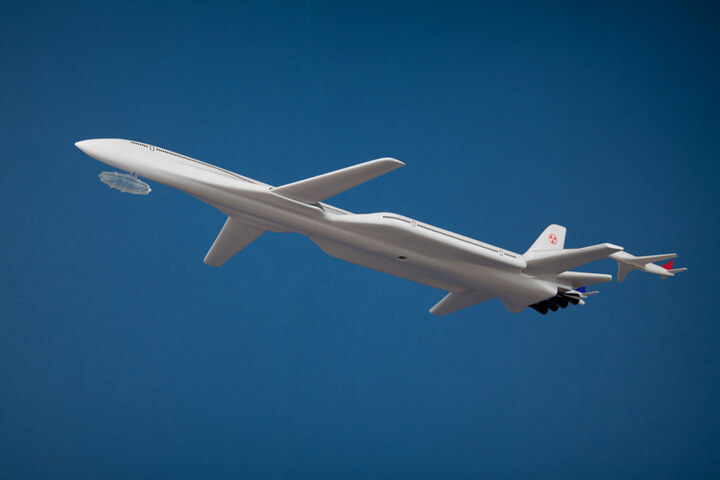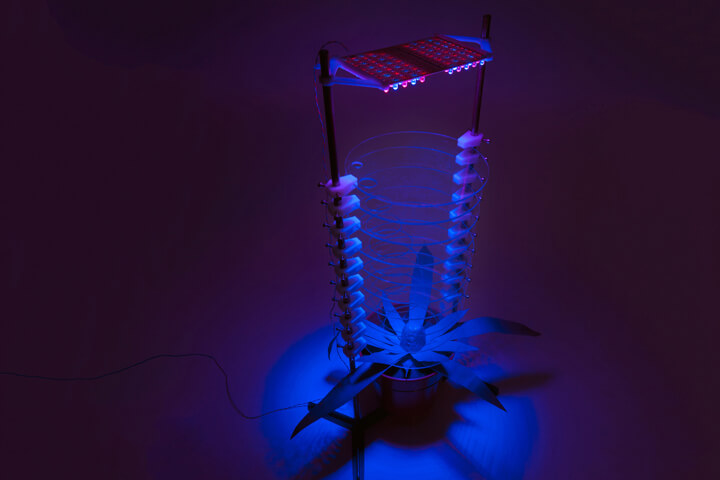Words by Cathrine Disney
The term technophilia refers to one’s enthusiasm or passion for new technologies, taken literally from Greek technē, meaning art, craft or skill and philos, meaning beloved, dear or friend.
A recent graduate of Design Interactions at RCA and technophile, Tim Clark, is exploring the complex paths of current technological progress. Through investigating major technological advancements and the forces behind how these may take shape, Clark’s work proposes innovative and sustainable alternatives to some of the world’s most pressing issues such as access to personal data online, extinction of endangered species and excess energy consumption.
While in Atlas of the Habitual Clark denounces how companies are profiting from our personal data, in Black Gold he explores advances in synthetic biology and how they can be used to prevent the extinction of endangered species.
However, the project that most caught my attention is High Speed Horizons, his graduate work. By drawing upon aviation’s rich history, Tim Clark imagines future visions of alternative energies and flight. The Boomjet, is a sonic boom-powered passenger aircraft travelling faster than the speed of sound.
Theoretically, we would have the most efficient and sustainable energy source imaginable if we were able to harness the energy produced by a sonic boom. Clark’s work brings us a step closer to realising our ultimate green energy aviation dreams.
What is more important: to take or not take yourself too seriously in order to be creative?
No matter what you do you need to take it seriously. If you don’t how can you expect others to especially if you are suggesting highly unorthodox solutions to complex problems like I do with my work?
While my technological visions utilise humour and creative solutions as a way to get across the extreme nature of potential technical innovation, they are strongly rooted in theoretical possibilities in the sciences and technology.
In my work, I try to keep my delivery loose and lighthearted but have my facts straight and make sure I have done my homework so I can respond to those who pass it off as impossible or just dismiss it. It takes a serious person to get an aerospace engineer to talk about the feasibility of using sonic booms to power aircraft with them for several hours. Similarly, as I did for High-Speed Horizons.
It was one of the funniest brainstorming sessions I’ve ever been a part of and we came to some truly inventive and feasible possibilities.
Seriousness gets you in the door in such instances but creativity and snowballing get you the new and creative insights that no one else has thought of before.
Solitude or loneliness, how do you spend your time?
100% solitude. I think alone time is very undervalued and increasingly unobtainable today, especially for those that live in the city. You can only really know yourself and how you work by spending time by yourself.
Too often people are shaped by external factors when we should focus on shaping ourselves from the inside out. Although it may sound like it there, I am not a particularly spiritual person. I spend my free time by myself when I can backpacking and backcountry skiing.
I have backpacked for hundreds of miles with little to no contact with others. For me, there is no better feeling than being alone surrounded by nature. Everything you need must come from yourself – decision-making, entertainment and in some cases even survival. Preserving and finding a balance with nature using technology is an important theme in my work.
Who or what was the last person, place or thing that fascinated you?
The last thing that truly fascinated me was the recent NASA proposal to use a submarine to explore the methane seas of Saturn’s largest moon. How amazing is that! I absolutely love the solutions coming out of recent space exploration.
They excite and inspire. They are equally illogical sounding as they are completely logical. It shows how out-of-the-box thinking rooted in scientific possibility has a place in this world…or at least in another.
That’s the balance I strive for in my work. A proposal that seems wrong but the more you think about it it actually might be the right thing to do. With my Black Gold project I did with colleague Frank Kolkman we looked at who besides righteous scientists or activists might be the ones to actually save endangered species.
We came up with the caviar-loving yacht-owning super rich to save the beluga sturgeon and black-market synthetic rhino horn growers to save the endangered African rhinos. Those people have more incentive to save the species because they directly benefit financially from their existence. Seems wrong but realistically is it probably more likely to prevent extinction than anything we are doing today to try and save those creatures.
What is your favourite time of day?
Predawn is my favourite time of day. The world is calm and free from the hectic nature of the day. That time of day feels like a non-place to me, like time gets to stand still for just a few more moments. Unfortunately, I do not get to experience it much because it is so early, only really get to when I have a very early flight to catch.
One for the road… What are you unafraid of?
Technological progress. We will always move forward. There is no going back even if it is not the best idea. Whether or not I agree with how advancements are taking shape it will always provide the opportunity to critique them with the hope to influence them to change. My aircraft Air Laissez-fare sums up how I feel about all of it.
It’s a proposal for a self-piloting always airborne nuclear-powered free enterprise aircraft that makes the furthering of innovation outside the jurisdiction of governance and sovereign airspace possible. It is intended for forward-thinking entrepreneurs and others with innovative ideas to pursue their visions without the hindrance caused by legislation, taxation and other external oversight.
Its nuclear-powered propulsion has a historical precedent whose development ended due to political and environmental concerns during the Cold War after 2 actually operational aircraft were built by USA and USSR. Nuclear power was and still is a very promising alternative to petroleum in aircraft but the technology is too clouded by politics and historical events to gain acceptance.
Air Laissez-fare is a grand vision that shows that innovation leads to new promising ideas but always brings with it new negative implications. It leaves one to decide whether or not the pros of new innovations outweigh their cons.










